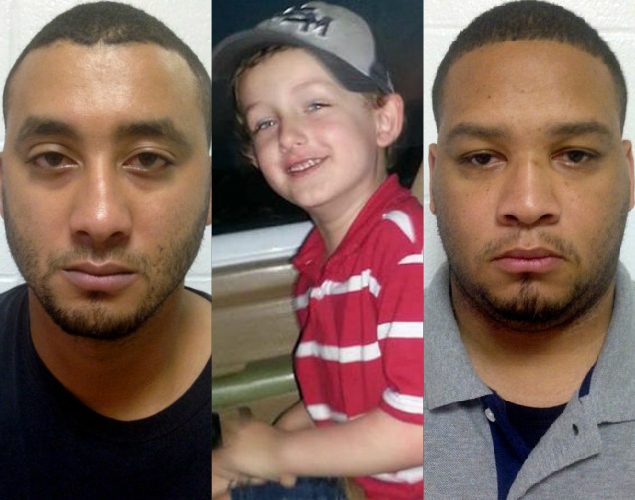
Jeremy Mardis, a six year old resident of the City of Marksville, Louisiana is the latest victim of police to die without cause. According to the City Marshalls involved, identified as Norris Greenhouse Jr, and Derrick Stafford, the subject Christopher Few, led them on a high speed chase which ended with Few ramming his car into their cruiser. The following barrage of gun fire left Few in critical condition and his son, Jeremy Mardis, dead.
According to investigators, they do not know why Norris and Greenhouse pursued Few, as it turns out he had no warrants. It is now believed that the officers lied about the circumstances which led to the pursuit and shooting. Investigators also commented that they found no gun in Few’s vehicle and that there was no evidence that he had backed his car into the Officer’s cruiser. Mardis’ official cause of death was homicide by gun fire, as he had sustained five gunshots to the head and chest. State Police Colonel Michael Edmonson commented that while he did not want to discuss details of the body cam footage he observed, he did state that “it is the most disturbing thing I’ve seen and I will leave it at that. That little boy was buckled into the front seat of that vehicle and that is how he died.” Both officers were arrested Saturday night and booked into the Avoyelles Parish Detention Center on charges of second degree murder. Bond was set at $1 million each.
In 2014, the United Stated Supreme Court ruled that it is legal for police to use deadly force to end police chases. The decision stemmed from the case of Plumhoff v. Rickard. This case is a curious one, as it alleged that the officers used excessive force and violated currently established use of force law. The courts agreed, and the appellate courts agreed. The supreme court, however, did not. While the currently established and well founded laws that govern police use of force dictated that the officer involved did actually exceed parameters set by the use of force matrix, the supreme court in their infinite wisdom opted to throw out the book and write a new one. The idea behind the ruling is that the ongoing pursuit of a vehicle is more dangerous to the public than ending it, even if by ending it, the officer takes a life. The overwhelming problem with this decision is that police do not need to pursue. Period. I worked for an agency that had a no pursuit policy and guess what, it worked just fine. Pursuits are dangerous and should be used only in extreme circumstances.
With each of these new police shootings, secondary topics are brought to light. In this case, police pursuits are pulled into the spotlight. And that is a good thing. The first step in this case is making sure the officers arrested pay for their crimes. The second is making sure that police pursuits are more heavily scrutinized by the public and that police behaviors are curbed by the awareness of the public.





Cop kills 6 year kid not cool
On top of the 2014 Supreme Court ruling cited above, today SCOTUS expanded cop immunity even further:
The ruling bolsters previous decisions that give police the benefit of the doubt when they encounter a potentially dangerous situation. The court noted in an unsigned 12-page opinion that it has “never found the use of deadly force in connection with a dangerous car chase to violate the 4th Amendment.”
In dissent, Justice Sonia Sotomayor faulted the majority for “sanctioning a ‘shoot first, think later’ approach to policing.”
http://www.latimes.com/nation/la-na-supreme-court-police-shootings-20151109-story.html